Edible nuts and seeds are tasty and fun to eat as snacks. But beyond that, edible nuts and seeds are generally healthy (barring allergic reactions).
As someone who loves nuts and seeds, you are familiar with cashews, almonds, hazelnuts, and other popular nuts. But what if we told you about some other uncommon nuts you could add to your diet?
Read on if, like us, you go nuts for nuts. In this article, we compile a list of 37 types of edible nuts and seeds. If you ever wanted to make your diet exciting by adding more nuts, you’ve found the right article.
Table of Contents
1. Acorns

Squirrels are not the only mammals that can enjoy acorns. If you want, you can eat acorns too. Acorns are the nuts of oak trees. You’ll find them growing on oak trees in Asia, Europe, North Africa, and America.
Acorns are not edible straight off the tree. To become edible, acorns must undergo treatment to remove tannic acid. Tannic acid is bitter and potentially toxic to humans. Hence the need to remove it before consumption.
Treating acorns to become edible typically involves a repeated boiling-drying cycle. However, you can also roast them.
You can grind acorns into flour to make bread, cookies, cake, pancakes, and pasta. You can also use acorns to make acorn porridge.
2. Almonds
Almonds are perhaps the most popular type of edible nut in the U.S. Most of the world’s almond nuts come from California.
Almonds are very nutritious; they contain monounsaturated fats, minerals, proteins, dietary fiber, and vitamins. Many studies even link them to the risk reduction of specific diseases. So, the popularity of almonds in the U.S. goes beyond the fact that we produce most of the world’s almonds.
Unlike acorns, you can eat almonds off the tree. However, for better flavor and a reduced risk of consuming toxic mold, it is better to wait a few weeks before eating almonds. We suggest waiting for at least 14 days.
Like acorns, you can grind almonds into flour and make pastries. You can also use almond flour to make fruit crumbles, bread crumbs, and a crust for chicken or fish.
3. Atherton Oak Nuts
Atherton oak nuts come from the Atherton oak, a tree endemic in the North East Queensland rainforest in Australia.
The Atherton oak produces large, edible fruits. Within this fruit, you will find a brownish, woody kernel. Then inside this kernel, you will find the Atherton oak nut.
The Atherton oak nut is a white nut that tastes like coconut and macadamia nuts. However, its flavor is somewhat distinct from those two types of nuts and seeds.
You might eat Atherton oak nuts raw, as is the case most times. Alternatively, you could get creative with them in the kitchen.
4. Baru Nuts
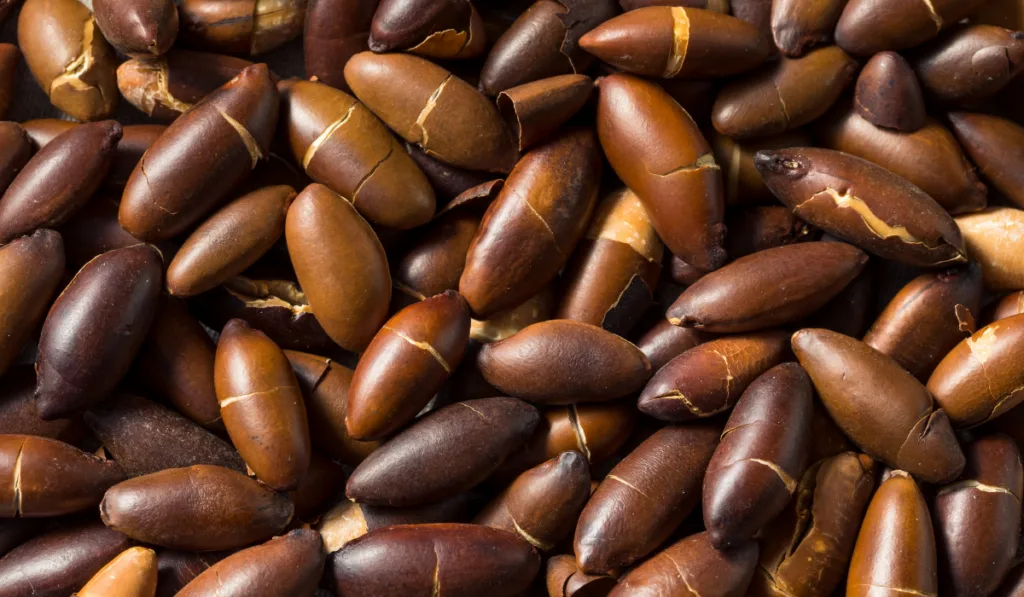
Baru nuts are not nuts in the botanical sense. More accurately, they are legume seeds. Baru nuts–also Barukas, Baru seeds, or Baru almonds–are pretty tasty. They taste like a combination of peanut and cashew. However, they are milder than peanuts, slightly sweeter than cashews, and harder than both.
Beyond being tasty, Baru nuts are nutritious. They contain iron, vitamin E, potassium, fiber, magnesium, zinc, and many other micronutrients.
Baru nuts are typically used in making Baru nut butter. However, you may also use them to prepare Baru nut bowls.
5. Beechnuts
Beechnuts are the nuts from beech trees. They are pretty easy to spot, thanks to their somewhat spiky pods.
Beech trees typically produce beechnuts in the fall. The nuts are chock-full of nutrients. But beyond that, they are pretty.
You cannot eat beech nuts off the tree. Before the nuts become edible, you must cook them to remove their toxic saponins.
6. Brazil Nuts
Brazil nuts grow on large-sized trees in the Amazon rainforests of South America. You’ll commonly find them in Brazil, Bolivia, and Peru.
Brazil nuts are pretty nutritious. They contain calcium, iron, vitamin E, and niacin, and they are one of the richest sources of selenium. Brazil nuts also have a good fatty acid profile and a lot of protein.
You can eat Brazil nuts raw or blanch them. You may use them in making cookies, vegan cheese, Brazil nut milk, and macaroons. You can also add them to salads as accents.
7. Butternuts
Butternuts are hard nuts from the butternut tree. They are somewhat oval, deeply ridged, and are about the size of a pecan nut.
Butternuts stay hidden inside a green, hairy husk, which matures around mid-fall. The nuts taste like pine nuts, and you can eat them raw or use them in baking.
8. Cacao Seeds
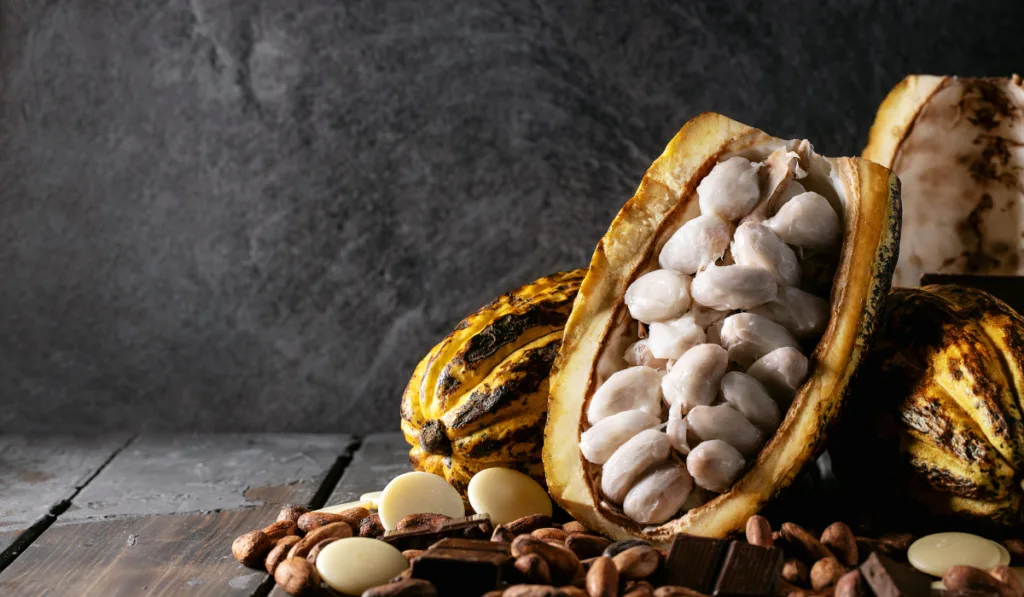
Cacao seeds are the seed from the cocoa tree – a tropical evergreen tree. They also go by the name cocoa beans.
Cacaos come in cocoa bean pods, which are due for harvesting only when ripe. After harvesting cacao seed pods, you should leave them to dry for about ten days. After that, you may eat the raw cacao seeds covered in a gel-like fluid. Alternatively, you may process the seeds further and use them for various other purposes.
Processed cacao seeds find uses in making chocolate, cocoa powder, cacao butter (different from cocoa butter), and even cosmetic products.
9. Candlenuts
Candlenuts are seeds from the candlenut tree. Besides candlenut, the tree goes by many names, including candleberry, varnish tree, and Indian walnut.
Candlenuts are soft, cream-colored seeds. They look similar to macadamia nuts. Unsurprisingly, both types of nuts are relatives.
Candlenuts are not immediately edible. To eat them, you must cook them to remove toxins. Candlenuts taste a bit like macadamia nuts. However, they have a hint of bitterness.
In Southeast Asian cuisine, people use candlenuts to make pastes. The paste acts as a binder and thickener in curries, stews, and gravies. Candlenuts also find various other culinary uses in Hawaiian, Indonesian, and Malaysian cuisine.
Are you wondering why they call them candlenuts? Well, it is because you can also use them in making candles.
10. Caraway Seeds
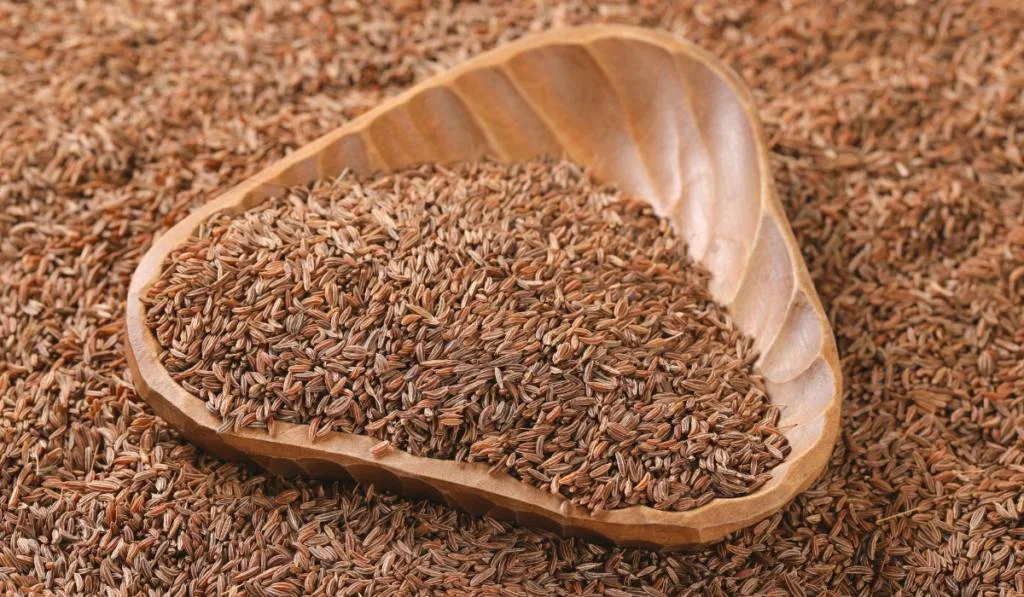
Caraway seeds come from the caraway plant.
Caraway seeds have an intense aroma with an earthy, citrusy, and peppery undertone.
They are typically used as a spice and a baking ingredient. You can use them ground or whole and put them in bread, stews, casseroles, sausages, and curries, amongst other things.
11. Cashews
While most people think cashews are nuts, they aren’t actually nuts, according to botany. Instead, cashews are seeds that grow at the base of the cashew fruit.
Cashews are one of the most popular types of edible nuts and seeds. But you must be careful if you are trying to collect them yourself. The outermost shell of cashew is caustic, so if you handle it without care, your skin might suffer severe burns.
Beyond being delicious, cashews are pretty nutritious. They offer magnesium, antioxidants, and various other nutrients.
You can use cashews to make butter, sour cream, cashew chicken, and sauces. You can also roast them and just eat them.
12. Cedar Nuts
Cedar nuts come from the Siberian Pine. They have an oblong shape, and you can eat them raw or roast them. You can add them to salads, fish dishes, and beef dishes.
Cedar nuts are pretty beneficial to the immune system. They are high in fat and vitamins, and they have more protein than pine nuts.
13. Chestnuts
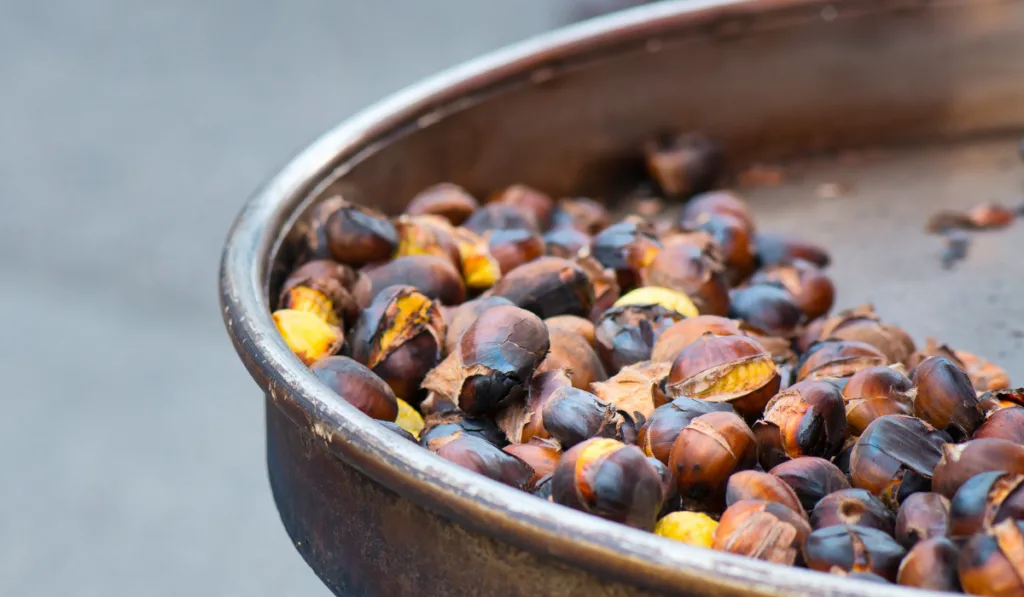
Chestnuts come from chestnut trees–a range of deciduous shrubs and trees from the genus Castanea. You will find them in various regions of the Northern Hemisphere, including the United States, Italy, and Greece.
While you can eat chestnuts off the tree, they are bland when eaten as such. For the best flavor, store chestnuts in a refrigerator for a few days to allow the starches to turn to sugar. Then, you can eat them raw, peel them, or roast them.
You can use chestnuts as a thickener for sauces and soups. You can also use them in making cakes, pies, and purees.
14. Chia Seeds
Chia seeds come from chia, a flowering plant native to Mexico and Guatemala. They are grey and oval with some black and white spots.
Chia seeds are tiny, averaging a diameter of 0.079 inches (2 mm). While they might be small, chia seeds are a kind of superfood. They are chock-full of many desirable nutrients, including zinc, calcium, omega-3, phosphorus, and protein.
You can use chia seeds in smoothies, pudding, baked products, jam, energy bars, proteins bars, and salad dressings. You may also use them as a breadcrumb substitute.
15. Coconuts

While there is a “nut” at the end of their name, coconuts are not nuts. They are drupes. But then, in the absence of botanical accuracy, you can call a coconut a fruit, seed, or nut.
Coconuts come from coconut palms, a kind of palm tree. You can eat coconuts raw, collect their water, or process them to produce milk and oil. You can use coconut in drinks, coconut butter, soups, salads, ice cream, and yogurt.
16. Egusi Seeds
Egusi seeds are the seeds of the egusi gourd. The egusi gourd looks pretty much like a watermelon. However, while both fruits belong to the same family, they are pretty different. For one, watermelon flesh is sweet and edible, but the flesh of egusi gourd is bitter and inedible.
While the egusi gourd is not edible, its seeds are edible. In West African cuisine, egusi seeds are typically used for preparing soups. But besides that, people use them for oil or snack on them after husking them.
17. Flaxseeds
Flaxseeds are high fiber seeds of the flax plant, a flowering plant found in Canada, Europe, and Russia. They are pretty nutritious and are a decent source of omega-3 fatty acids.
You may eat flaxseeds without cooking them. But before you do, ensure you wash and dry them thoroughly.
For easier digestion, you should grind flaxseeds before eating them. You may use ground flaxseeds in baking, energy bars, and cereals.
18. Ginkgo Nuts
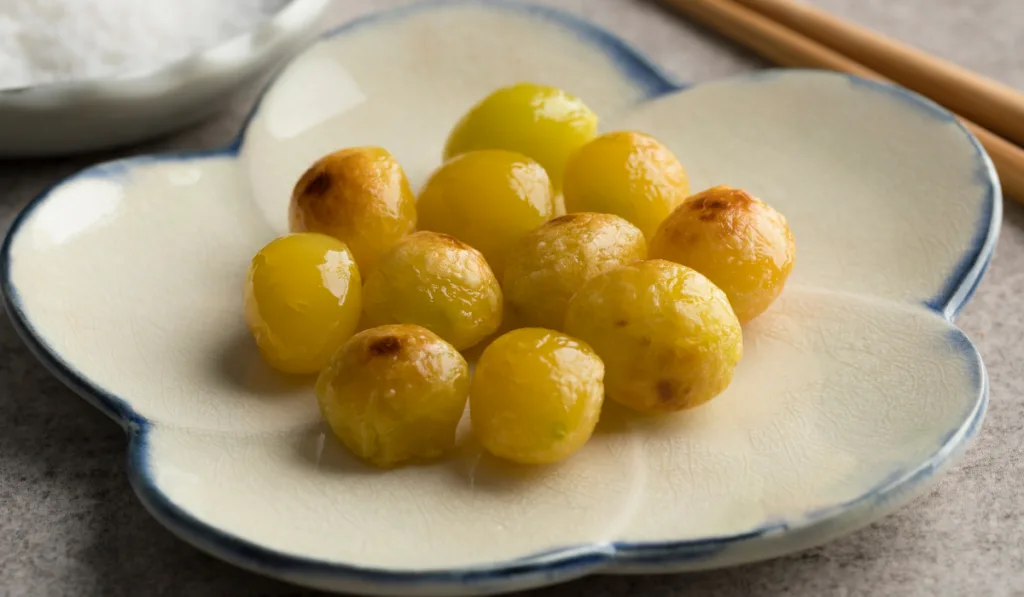
Ginkgo nuts come from the fruits of the Ginkgo biloba tree, a large tree native to China. They offer both medicinal and culinary benefits.
Ginkgo nuts are not edible when raw. You must cook them before you can eat them. When prepared correctly, ginkgo nuts are pretty tasty; they taste like a mixture of potato and edamame.
In many cases, ginkgo nuts find use as garnish. But you can prepare them in many other ways. When consuming ginkgo nuts, ensure you set a limit. Eating too many ginkgo nuts over a long period leaves you at risk of toxicity.
19. Hazelnuts
Hazelnuts come from hazels – a range of deciduous trees and shrubs found in North America, Asia, and Europe.
Hazelnuts are one of the most delicious types of nuts. You can use them in so many ways. You can roast them and add to chocolate or chop them and add them to pastries, cookies, and pies.
You may also use hazelnuts to make oil or butter. You may also use it as a flavoring agent for things like coffee.
20. Hemp Seeds
Hemp seeds come from the hemp plant. They are small, brown seeds packed with various nutrients such as omega-3s, omega-6s, fiber, protein, and antioxidants. Some people even consider hemp seeds to be superfoods because of how nutritious they are.
You can use hemp seeds as toppings for salads, rice, vegetables, yogurt, oatmeal, and ice cream. You can also use them to make butter, smoothies, and chocolate spread.
You may eat hemp seeds raw if you want.
21. Hickory Nuts
Hickory nuts come from trees belonging to the Carya genus. Hickory nuts are oily and nutritious, and they have a pecan-like flavor.
You can eat hickory nuts straight out of their shells. Alternatively, you may bake, toast, or roast them. You may also use them in making syrups, making milk, and baking.
22. Jackfruit Seeds

The jackfruit is the largest fruit that comes from a tree– it weighs around 100 pounds on average. It comes from the jackfruit tree, also known as the jack tree.
While jackfruit seeds are highly nutritious, you should avoid eating them raw. The seeds contain anti-nutrients, and this could be problematic. In fact, if you have leaky gut syndrome, celiac disease, or Crohn’s disease, you may want to avoid jackfruit seeds altogether.
Instead of eating them raw, you can roast or boil jackfruit seeds. When you boil or roast them, they taste somewhat like potatoes.
Drugs like ibuprofen, naproxen, and aspirin are incompatible with jackfruit seeds. So, if you are on medication, you may want to ask your doctor or pharmacist before eating jackfruit seeds.
Besides cooking jackfruit seeds and eating them as a snack, you may use them in making butter or in baking.
23. Kolanuts
Kolanuts come from some trees of the Cola genus. They can be of different colors, including brown, yellow, pink, and red.
While kola nuts have a sweet aroma, they are actually bitter. They contain caffeine and theobromine (about 2-4 percent). Hence, they have a stimulatory effect.
Kolanuts are commonplace in West African culture, where people eat them as snacks and use them in folk medicine.
24. Lotus Seeds
Lotus seeds (also known as lotus nuts) are seeds of the sacred lotus plant. They are commonplace in Japanese and Chinese cuisine in pastries, soups, and puddings.
You can eat fresh or dried lotus seeds. You can also grind them and use them in soups, bread, and other similar meals.
25. Macadamia Nuts
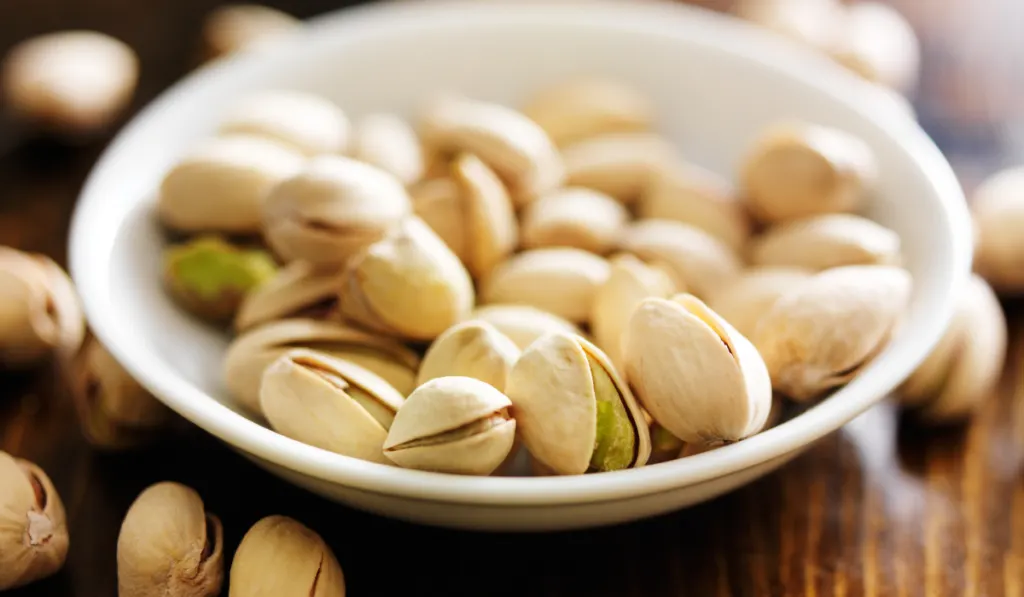
Macadamia nuts come from trees of the Macadamia genus. They grow in various warm areas all over the world. However, you are more likely to find them in Hawaii and Australia.
Macadamia nuts are pretty expensive. But then, their creamy, buttery, and nutritious properties make them worth it.
You can use macadamia nuts to make cookies, muffins, fudge, crusted chicken, and granola.
26. Mongongo Nuts
Mongongo nuts come from the mongongo tree. They are popular in the Kalahari region and are quite nutritious.
You can eat mongongo nuts raw, or you may roast, steam, chop, or pound them before adding them to other dishes.
27. Nigella Seeds
Nigella seeds are seeds of the fennel flower. They are native to the Mediterranean, and they are primarily used as spices.
Nigella seeds have a hint of bitterness alongside an oregano-like flavor and a toasted-onion flavor. You can use them in soups, salads, and sauces.
28. Peanuts

Like Baru nuts, peanuts are not actually nuts. More accurately, they are legume seeds. Peanuts come from the peanut plant.
Besides being edible when raw, peanuts have many uses in various cuisines all around the world. You can roast, blanch, boil, powder, or fry them.
You can use peanuts to make peanut butter, peanut soup, salad, cookies, chocolate bars, and peanut brittle.
29. Pili Nuts
Pili nuts are oval-shaped nuts from the pili plant. You can eat them raw or roast them.
Raw pili nuts taste like roasted pumpkins or sunflower seeds. But the roasted ones have a nuttier taste. Like raw pili nuts, roasted pili nuts remain chewy with melted, buttery insides.
You can use pili nuts to make flour and butter. You can also use them when preparing puree, sauces, and vegetables.
30. Pine Nuts
Pine nuts are the seeds of the pine tree. They come shelled in a pinecone, and you have to remove them from the pinecone and remove their shell before eating them.
You can use pine nuts as a garnish on various dishes. You can use them in salads, pasta, and pesto. You may also eat them raw.
31. Pistachio Nuts
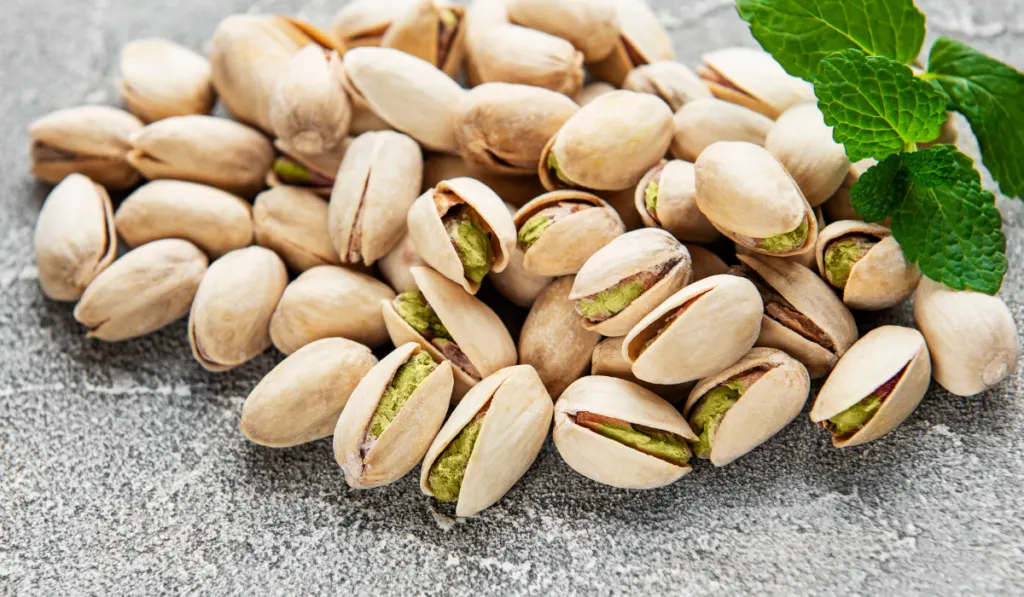
Pistachio nuts come from the pistachio tree, a member of the cashew family. They are highly nutritious and incredibly delicious.
You can eat pistachio nuts raw after washing them. However, you are more likely to find people roasting and salting them before consumption.
You may use pistachio nuts as a garnish in foods like ice cream. You may also add them to drinks like lemon juice and light dessert wine.
Beyond those uses above, you can use pistachio nuts in soups and as stuffing for chicken, duck, and pig meat. Also, when you grind pistachio nuts, you may use them in making cakes, cookies, and creams.
32. Pomegranate Seeds
Pomegranate fruits themselves are too thick to be edible. However, you can eat the tiny pink seeds within. The seeds have a sweet covering called an aril – this is also edible.
You can use pomegranate seeds in rice, salads, and other grains. You may also stir them into yogurt or add them to tarts, scones, cakes, and chocolate desserts.
33. Poppy Seeds
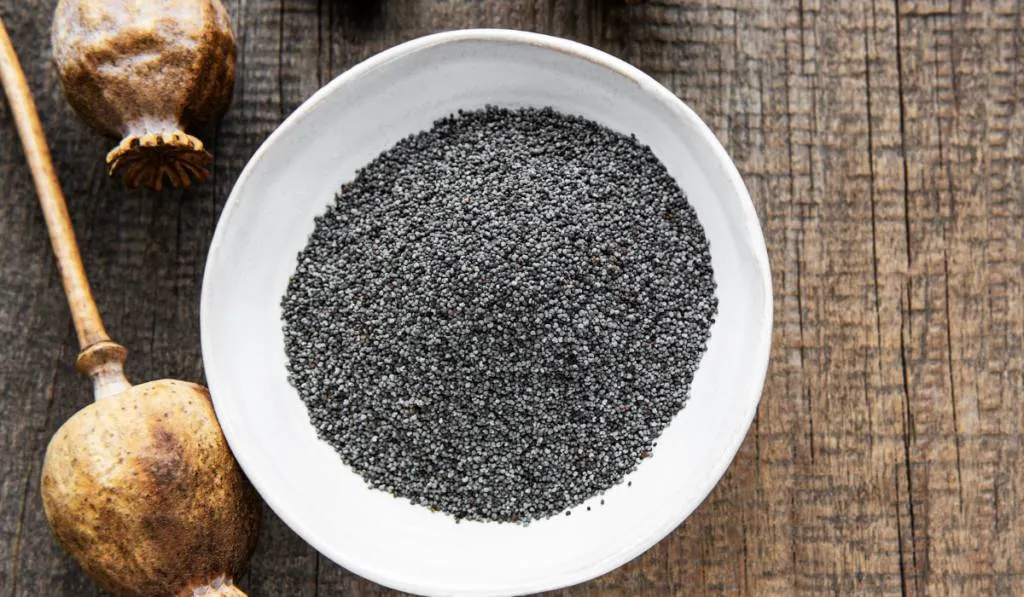
Poppy seeds are the seeds of the poppy plant. They are small, round, and can be gray, bluish, or black. Their color depends on the time of cultivation.
Poppy seeds are pretty nutritious. They contain high levels of manganese and decent amounts of copper. You can sprinkle poppy seeds on buns, bread, and bagels. You can also use them as dressing for salad and pasta.
34. Pumpkin Seeds
Pumpkin seeds come from pumpkins. Like egusi seeds, they are flat and oblong, and you can eat them raw. But apart from eating them raw, you may also roast them.
You can use pumpkin seeds in various ways. You can use them to make soups, cookies, granola, pesto, sauce, and butter. You may also use them as a crust for fish and meat.
35. Quinoa Seeds
Quinoa seeds come from the quinoa plant, a flowering plant in the amaranth family.
Quinoa seeds are a bit chewy like rice. However, they are more protein-rich and lower in carbs. Quinoa seeds have a nutty taste and are fluffy.
You can eat quinoa seeds as an alternative to rice and other grains. You may also use them as a breading for fish and chicken. Also, you may roll them into cookies and muffins.
36. Sesame Seeds
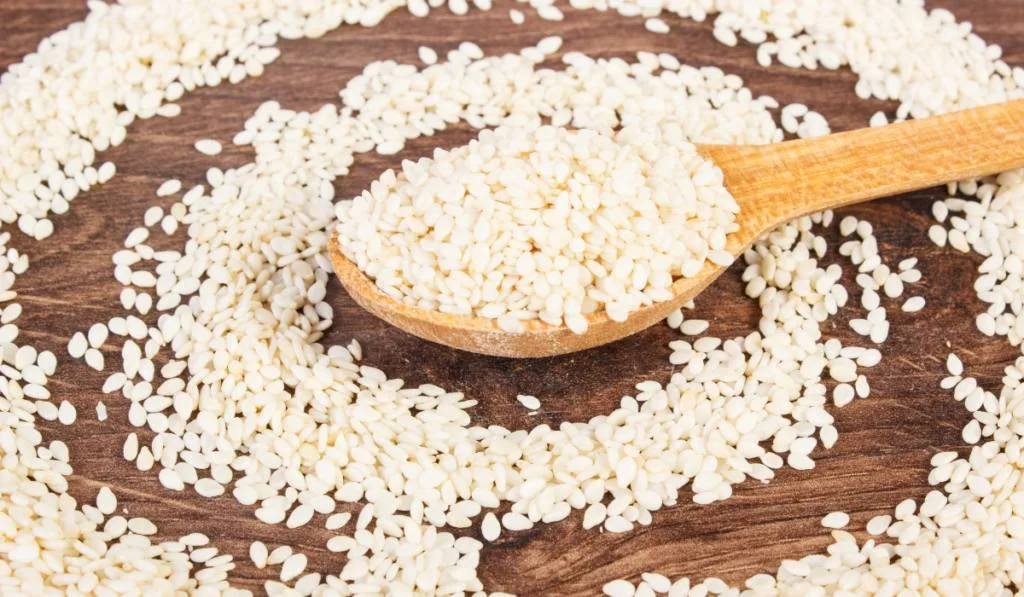
Sesame seeds are the seeds of sesame, the oldest oilseed crop in existence. They are highly nutritious as they contain minerals, fiber, protein, healthy fat, antioxidants, B-vitamins, and other beneficial compounds.
Sesame seeds have an intense, nutty flavor. You can use them as a sprinkle on salads, stir-fries, pasta, or soups. When ground, you may mix sesame seeds with hot cereal. You may also use them in marinades or salad dressing.
37. Sunflower Seeds
Sunflower seeds are seeds of the sunflower plant.
Sunflower seeds are one of the healthiest sources of healthy fat. Beyond that, they contain vitamins, minerals, and antioxidants. So, overall, they are a healthy addition to diets.
Sunflower seeds are tender and mildly nutty. You can eat them raw, roast them, or toast them. You can also use them to make butter, or you can sprinkle them on baked goods.
Resources
- https://www.homestratosphere.com/different-types-of-nuts/
- https://blog.ediblearrangements.com/different-types-of-nuts/
- https://www.worldatlas.com/articles/top-almond-producing-countries.html
- https://www.thekitchn.com/5-amazing-ways-to-use-almond-meal-ingredient-spotlight-190156
- http://edibleculture.blogspot.com/2019/03/Atherton-oak-nuts.html
- https://practicalselfreliance.com/foraging-beech-nuts/
- https://www.gardeningknowhow.com/edible/nut-trees/walnut/butternut-harvesting.htm
- https://www.ehow.com/list_6037610_uses-cocoa-beans.html
- https://culinarylore.com/specialty-foods:candlenuts-in-southeast-asian-cooking/
- https://www.healthline.com/nutrition/caraway
- https://www.healthline.com/health/food-nutrition/benefits-of-chia-seeds
